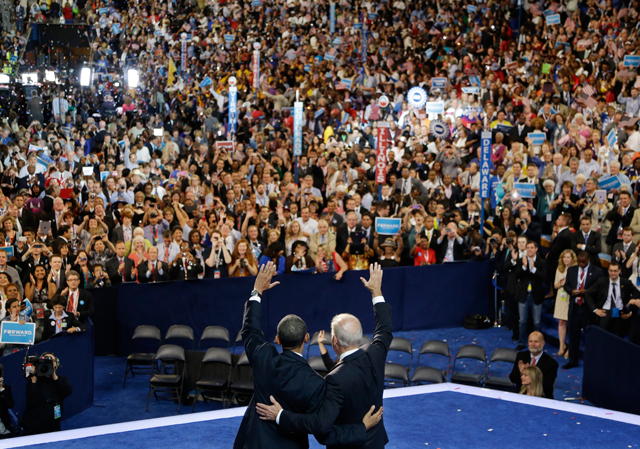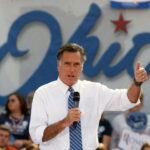Election Central’s Classroom Connection asks two AP Government classes at Worthington Kilbourne High School in Worthington, Ohio to give their opinions on the events of this year’s presidential campaign race.
Here, the students weighed in on the Democratic Party and Republican Party National Conventions. –ed.
The Parties Take the Stage
From August 27 to August 30, the GOP (Grand Old Party) members congregated in Tampa, Florida, for the Republican National Convention. Confetti and cheers resounded throughout the convention hall as some of the party’s rising stars such as Florida Senator Marco Rubio, celebrities such as Clint Eastwood, family members such as Ann Romney, and the vice presidential and presidential candidates–Wisconsin Representative Paul Ryan and former Massachusetts Governor Mitt Romney–took the stage.
A week later, from September 4 to September 6, the Democratic Party members gathered at the Democratic National Convention in Charlotte, North Carolina. Here, faithful members of the party fueled the excitement, chanting, as Democratic leaders such as Bill Clinton, people representing groups that the president has helped, celebrities such as actor Kal Penn, family members such as Michelle Obama, and the vice president and president–Joe Biden and Barack Obama–rallied support.
The Purpose of Conventions
These political conventions serve a number of purposes. Like pep rallies, the primary purpose of political conventions is to create a firm base of support for the candidate. As many Americans begin to tune in to the elections around this time, conventions spark interest in the parties and launches momentum for the crucial moments of the presidential race that follows.
The Democratic Party, especially, demonstrated it this year. Conventions are held to encourage citizens to vote. Due to the decreasing number of people showing up to the voter polls, conventions need to trigger enough interest to push for higher turnouts, especially through minority groups and swing state voters. The conventions also allow the people to start becoming familiar with the candidates and some of the policies they support, as well as challenging the positions presented by their political opponents.
The main purpose, however, is to get their candidate elected.
What Were the Conventions Like?
Each party emphasized certain themes at their respective conventions. The Republicans stressed a weakening America and how they will return it to the capacity it used to be. Stressing the current economy, especially the high national debt as well as the 8% level of unemployment, Romney appealed to the American people, highlighting Barack Obama’s “failing” stimulus package, stressing a repeal of Obamacare, emphasizing that he would create 12 million jobs, and attacking the current president, all to rebuild America into its former glory. The Republican theme was to underscore areas where Obama did not succeed to promote a better future under a new president.
The Democrats, on the other hand, accentuated all the accomplishments they have done in the four years to protect and expand citizens’ rights–pointing out new laws in favor of gay marriage, universal health care, and fair and equal wages. The Democrats underlined the fact that Obama gave out the order that killed Osama bin Laden. They highly stressed the fact that Obama could not change an economy that was this bad in four years, but what he had done was successful. The Democrats stressed that America is strong, and that they need to move “Forward, not back.” America is not to return to a policy that failed in the past, but toward new reform and better policies. Obama needed to win back his voters from 2008. The Democrats’ theme was that a lot was accomplished, but a long, more successful road is ahead.
The Post Convention Affects
As expected, after each convention, the impact on the presidential race sparked rises in polls for the respective parties. After the Republican National Convention, Romney’s ratings increased drastically among independents, but he gained only one point overall, gaining a slight lead. After the Democratic National Convention, Obama’s ratings increased as well, overtaking Romney’s lead by two percent, 46% to 44%. The momentum after the Democratic National Convention and Mitt Romney’s remark about “the 47%” launched a large increase in polling support for Obama.



